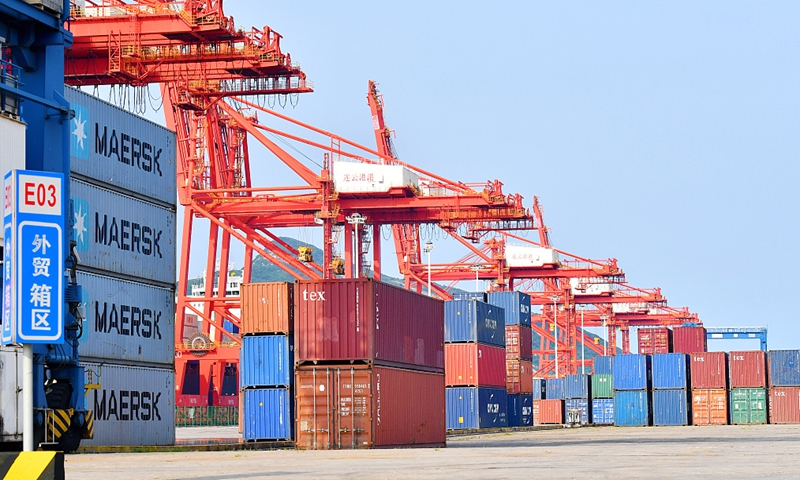
GDP photo: VCG
With North China's Tianjin Municipality releasing its GDP growth target for 2022 over the weekend, the nation's 31 provincial-level regions on the mainland have all announced their economic goals, which average about 6 percent - generally lower than for 2021, but still represents a relatively stable pace in the face of mounting pressure.
Given these targets and the emphasis on stability for economic development this year amid multiple challenges, experts forecast that the nation might set its GDP target around 5-5.5 percent. The figure is usually announced in the government work report delivered at the two sessions.
The two sessions of 2022, China's annual gatherings of the National People's Congress (NPC), the top legislative body, and the Chinese People's Political Consultative Conference (CPPCC), the top political advisory body, are scheduled to commence on March 5 and March 4, respectively.
Although the targets set by many local governments are lower than in 2021, they are generally above 5.5 percent.
"The adjustments are natural and reasonable based on the average GDP growth from 2020 to 2021, which was 5.1 percent," Dong Shaopeng, an expert adviser for the China Securities Regulatory Commission, told the Global Times on Sunday.
China's GDP expanded 8.1 percent in 2021, growing at the fastest pace in nearly a decade and landing well above the government's annual target of above 6 percent. The average growth of 5.1 percent in the past two years also led most of the world's major economies.
However, Dong noted that there are multiple headwinds, including the evolution of the coronavirus, which might continue to drag on the economy.
"Exports might face more pressure given the robust growth last year, while consumption needs to be further stabilized and expanded," Dong said, adding that travel should be promoted in the second half to expand domestic consumption.
China's economic development is facing pressure from a demand contraction, supply shocks and weakening expectations, and the external environment is becoming increasingly complicated, grim and uncertain, the 2021 annual Central Economic Work Conference pointed out in December.
Looking specifically at the goals set by the top three provincial economies - South China's Guangdong Province and East China's Jiangsu and Shandong Provinces, they all aim at growth around or above 5.5 percent compared with their goals for 2021, which were all above 8 percent.
Among the 31 provinces, autonomous regions and municipalities, Tianjin and Beijing set GDP growth targets at above 5 percent, relatively lower paces.
Based on the prudent moves of major local economies, this year's target setting will maintain the bottom-line mindset, which is also in line with mapping out in the key economic meeting, which put priority on stability while pursuing progress, Tian Yun, former vice director of the Beijing Economic Operation Association, told the Global Times.
Tian forecast that the national GDP growth target this year is likely to be around 5-5.5 percent.
"We should be aware that both the external and internal environments have greatly changed - more uncertainties lie ahead and possibly a resurgence of infections. Taking a dynamic view, a 5-percent growth target could be enough to prove the resilience and stability of the world's second-largest economy," Tian said.
Meanwhile, compared with the reserved ambitions of the more developed places, there are some provinces that want to take a bigger step ahead, with nine setting their GDP growth targets at or above 7 percent for 2022.
South China's Hainan Province set the highest GDP growth target at around 9 percent. The island's GDP grew 11.2 percent last year, ranking second to Central China's Hubei Province. But its average growth in the past two years ranked top among all the localities.




